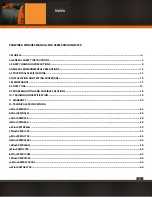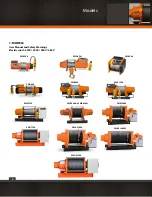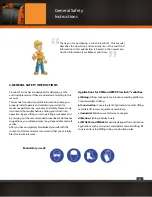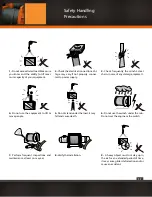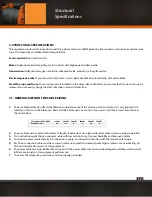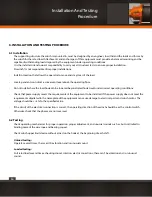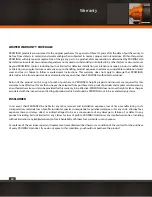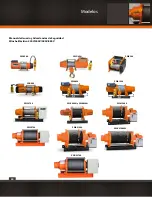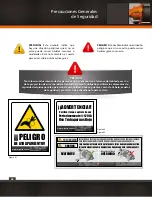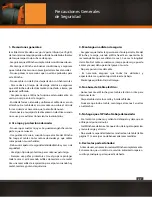
14
Installation And Testing
Procedure
6.1 Installation
-
The supporting structure the winch is mounted to, must be designed by an engineer, to withstand the loads and forces by
the winch for the rated load. Attachments and anchorages of this equipment must provide a balanced mounting and be
capable of withstanding loads imposed by the equipment under operating conditions.
It is the installer or/and owner’s responsibility to carry out all structural tests to ensure proper installation.
Prowinch® is not responsible of improper installations.
-
Install in location that allows the operator to move and stay clear of the load.
-
Locate pendant controls at a convenient level above the operating floor.
-
Do not install where the load hook can be lowered beyond rated hook travel under normal operating conditions.
-
Check that power supply meets the requirements of the equipment to be installed. If the power supply does not meet the
requirements stipulated in the nameplate of the equipment can cause damage to electrical parts and winch motor. The
voltage should be +/-5% fo the specified value.
-
If the circuit of the electrical connection is correct, the operating direction of the winch should be as the control switch.
Otherwise check that the phases are not reversed.
6. INSTALLATION AND TESTING PROCEDURE
6.2 Testing
-
Check operating mechanisms for proper operation, proper adjustment, and unusual sounds such as, but not limited to,
binding noise of the wire rope and bearing squeal.
-
Check winch upper limit device without a load on the hook at the beginning of each shift.
-
Unload testing:
Operate several times, there can’t be vibration and/or unusual sound.
-
Loaded testing:
Pull rated load several times, checking drum’s rotation, electric conections; there can’t be vibration and / or unusual
sound.



